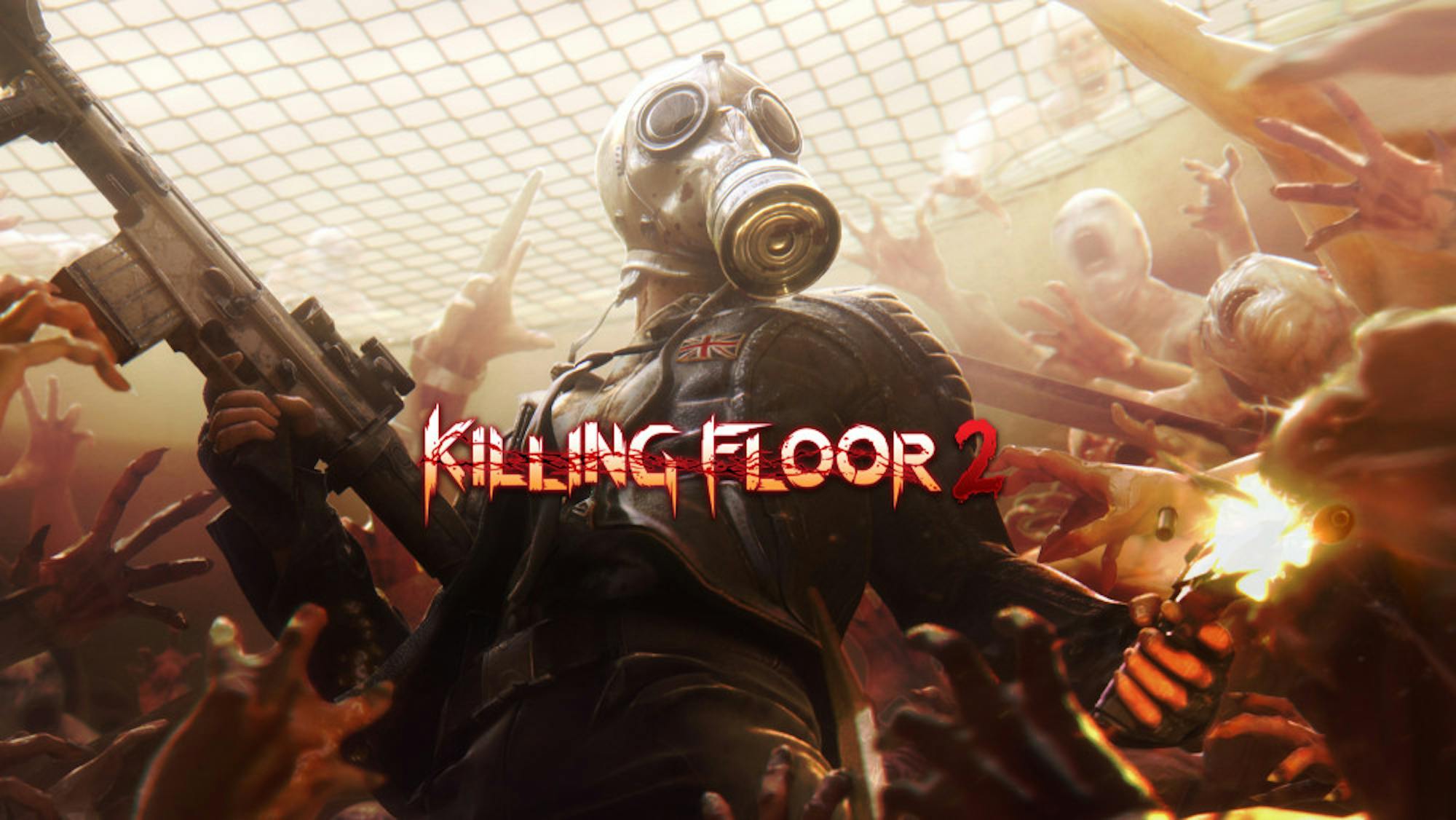If a little salt makes food taste good, a lot of salt must make food taste great, or so the flawed thinking goes. If the glorious excess of "Killing Floor 2," which was released on Nov. 18, is any indication, the developers at Tripwire Interactive bury their lunches in salt.
"Killing Floor 2" is a first-person shooter that pits groups of players against hordes of computer controlled, humanoid monsters called Zeds. These zombie-like monsters assault the players in waves, advancing with claws and chainsaws at the ready, and the players must eliminate all the Zeds that make up a wave.Each monster slain earns the player dosh, or money. If players survive a wave, they are rewarded with a brief reprieve from a battle and a chance to spend their hard-earned blood money on more powerful weapons. This process repeats with progressively more difficult waves until a final boss emerges. A game ends when the players conquer the final boss, or when all players are defeated.
The core gameplay of "Killing Floor 2" isn’t particularly complex: shoot monsters, get paid, buy bigger guns to shoot bigger monsters, rinse and repeat. The formula is also identical to the original “Killing Floor,” which Tripwire released 2009. The trick to succeeding with a simple formula is execution, and every detail of a fundamentally simple game must be well realized to make it worth playing.
The original “Killing Floor” has been succeeded by dint of a masterfully realized aesthetic. Built on the old-even-for-2009 Unreal 2.5 game engine, the game's dated technology lent its character models a blocky quality and its English environments a certain flatness. Coupled with an overwhelmingly brown color pallet and an anything-but-subtle film grain effect, the artfully low-fi game had a ragged charm and evoked Danny Boyle’s classic 2002 zombie movie “28 Days Later.” There was a sense of bowel-knotting dread about “Killing Floor,” as haggard characters fought the good fight in a ruined world, with gallows humor aplenty in between horrifying combat.
“Killing Floor 2” takes a different aesthetic approach to its predecessor. Built on a significantly modified version of the Unreal 3 engine, “Killing Floor 2” looks anything but dated. With the graphics settings turned all the way up, the game is capable of some serious eye-candy. A level set in Paris is particularly impressive, with wet cobbled streets and a burning Eiffel Tower looming in the distance.
The game’s graphical prowess is particularly evident in its weapon modeling. The developers at Tripwire are known for their love of guns, and that passion for firearms translates into some of the best-realized weapons in video games. From the slide flying back on a nine-millimeter pistol to the dull roar of a pump-action shotgun, every aspect of the firearms is meticulously implemented, which makes them a joy to shoot.
Tripwire also clearly invested a great deal of time in the game's gore systems. Slaying hordes of monsters was always going to make a mess, but Tripwire has implemented gore with all the glee of an over-excited 12-year-old with a morbid love of violence.
Weaker Zeds explode into torrents of gore and limbs when fired upon, and stronger Zeds display the punishment taken through exposed skulls or other horrific injuries. Tripwire has also made a point of keeping gore persistent, meaning that levels rapidly end up coated in blood, which should be horrifying, though it ends up feeling comically overdone.
Occasionally, as in the original “Killing Floor,” time will slow for all players in a mechanic dubbed Zed Time. Though Zed Time serves a gameplay purpose by making lining up headshots easier, it really is just an excuse for players to witness guns firing and heads exploding in slow motion, which sounds distasteful but is very much in keeping with the game’s over-the-top, heavy metal aesthetic.
All this graphical glitz gives “Killing Floor 2” a certain cleanliness that its grungy predecessor lacked. The sequel succeeds artistically, but fans of the blocky, brown original, with its jerky animations and tinny sounds, will find the neon colors, shiny surfaces and smooth, meticulously-animated characters and weapons of the latest iteration to be a radical departure from its predecessor.
For all its commendable bombast, “Killing Floor 2” is hard to recommend unless you have a group of friends to play it with. Once one has tried out all the weapons and character classes, which can be accomplished in an afternoon, “Killing Floor 2” gets monotonous quickly. The game does offer a progression system to keep players interested but the system involves obscenely long grinds to unlock what amounts to numerical bonuses. It is, after all, hard to get excited about unlocking a 5 percent movement speed bonus. A group of friends assuages most of this monotony.
Though it may only hold your attention briefly without a group of friends, "Killing Floor 2" is a monument to excess. If one was looking for evidence that burying fries in salt really does make them taste better, "Killing Floor 2" is it.
'Killing Floor 2' is gloriously excessive but quickly grows monotonous

Summary
It may get old fast, but "Killing Floor 2" is great while it lasts.
4 Stars





